Robert Feldt
Chalmers University
GateLens: A Reasoning-Enhanced LLM Agent for Automotive Software Release Analytics
Mar 27, 2025

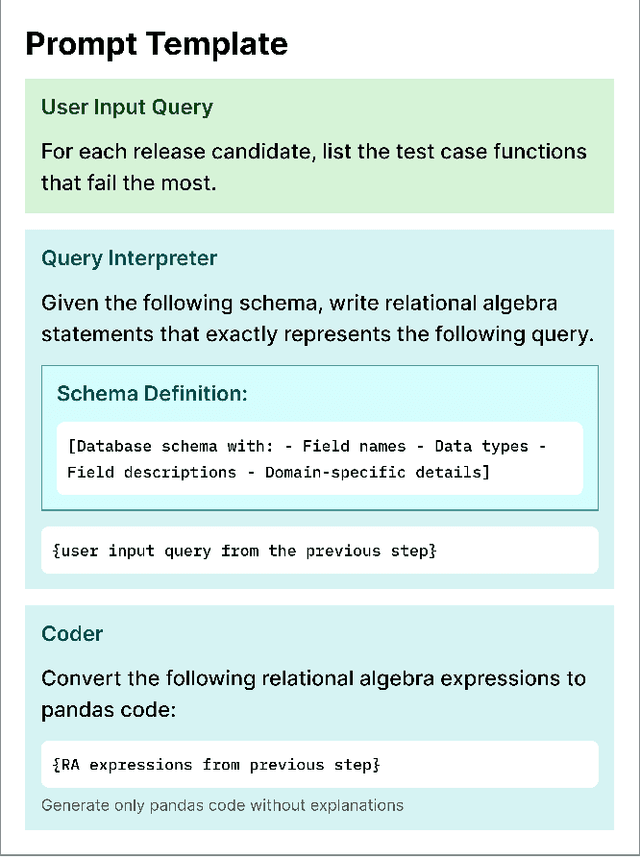

Abstract:Ensuring the reliability and effectiveness of software release decisions is critical, particularly in safety-critical domains like automotive systems. Precise analysis of release validation data, often presented in tabular form, plays a pivotal role in this process. However, traditional methods that rely on manual analysis of extensive test datasets and validation metrics are prone to delays and high costs. Large Language Models (LLMs) offer a promising alternative but face challenges in analytical reasoning, contextual understanding, handling out-of-scope queries, and processing structured test data consistently; limitations that hinder their direct application in safety-critical scenarios. This paper introduces GateLens, an LLM-based tool for analyzing tabular data in the automotive domain. GateLens translates natural language queries into Relational Algebra (RA) expressions and then generates optimized Python code. It outperforms the baseline system on benchmarking datasets, achieving higher F1 scores and handling complex and ambiguous queries with greater robustness. Ablation studies confirm the critical role of the RA module, with performance dropping sharply when omitted. Industrial evaluations reveal that GateLens reduces analysis time by over 80% while maintaining high accuracy and reliability. As demonstrated by presented results, GateLens achieved high performance without relying on few-shot examples, showcasing strong generalization across various query types from diverse company roles. Insights from deploying GateLens with a partner automotive company offer practical guidance for integrating AI into critical workflows such as release validation. Results show that by automating test result analysis, GateLens enables faster, more informed, and dependable release decisions, and can thus advance software scalability and reliability in automotive systems.
Capturing Semantic Flow of ML-based Systems
Mar 13, 2025Abstract:ML-based systems are software systems that incorporates machine learning components such as Deep Neural Networks (DNNs) or Large Language Models (LLMs). While such systems enable advanced features such as high performance computer vision, natural language processing, and code generation, their internal behaviour remain largely opaque to traditional dynamic analysis such as testing: existing analysis typically concern only what is observable from the outside, such as input similarity or class label changes. We propose semantic flow, a concept designed to capture the internal behaviour of ML-based system and to provide a platform for traditional dynamic analysis techniques to be adapted to. Semantic flow combines the idea of control flow with internal states taken from executions of ML-based systems, such as activation values of a specific layer in a DNN, or embeddings of LLM responses at a specific inference step of LLM agents. The resulting representation, summarised as semantic flow graphs, can capture internal decisions that are not explicitly represented in the traditional control flow of ML-based systems. We propose the idea of semantic flow, introduce two examples using a DNN and an LLM agent, and finally sketch its properties and how it can be used to adapt existing dynamic analysis techniques for use in ML-based software systems.
Automating a Complete Software Test Process Using LLMs: An Automotive Case Study
Feb 06, 2025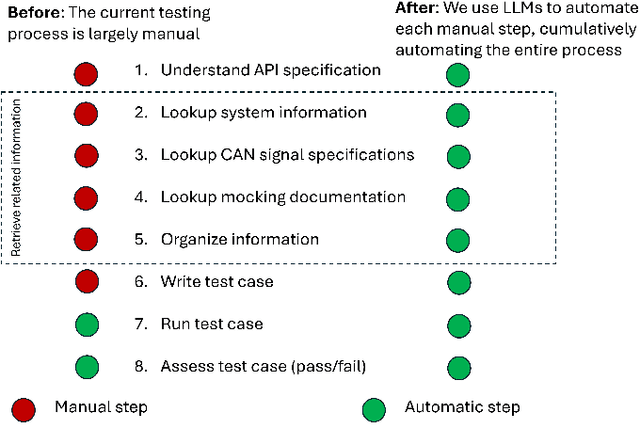
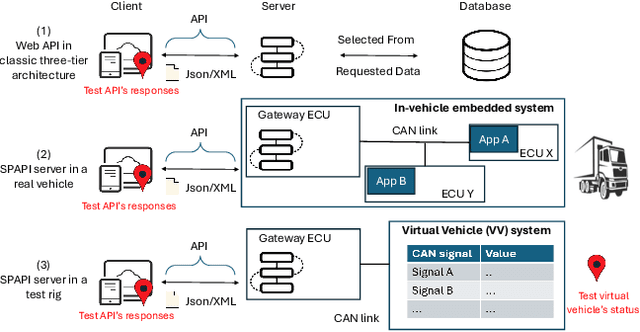
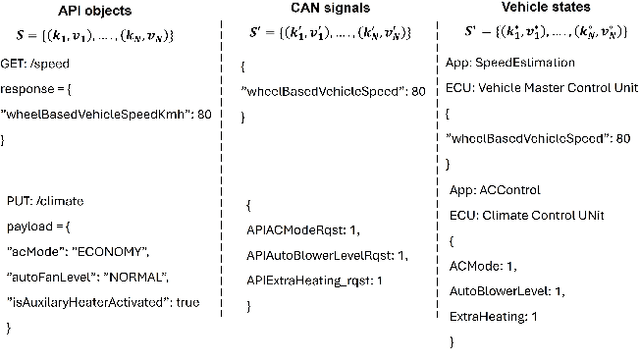
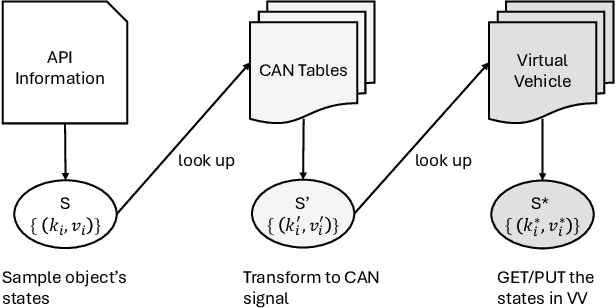
Abstract:Vehicle API testing verifies whether the interactions between a vehicle's internal systems and external applications meet expectations, ensuring that users can access and control various vehicle functions and data. However, this task is inherently complex, requiring the alignment and coordination of API systems, communication protocols, and even vehicle simulation systems to develop valid test cases. In practical industrial scenarios, inconsistencies, ambiguities, and interdependencies across various documents and system specifications pose significant challenges. This paper presents a system designed for the automated testing of in-vehicle APIs. By clearly defining and segmenting the testing process, we enable Large Language Models (LLMs) to focus on specific tasks, ensuring a stable and controlled testing workflow. Experiments conducted on over 100 APIs demonstrate that our system effectively automates vehicle API testing. The results also confirm that LLMs can efficiently handle mundane tasks requiring human judgment, making them suitable for complete automation in similar industrial contexts.
GoNoGo: An Efficient LLM-based Multi-Agent System for Streamlining Automotive Software Release Decision-Making
Aug 19, 2024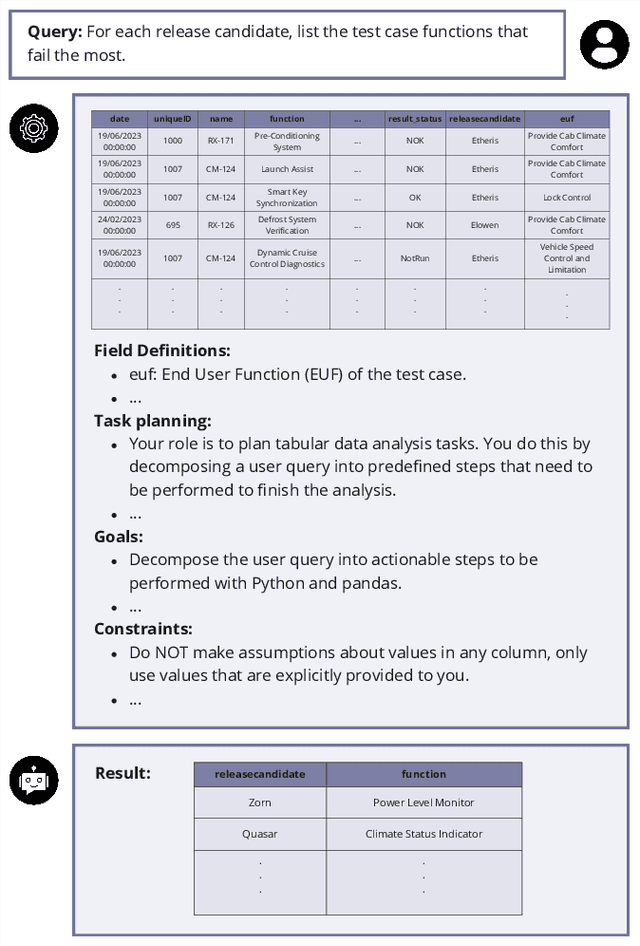
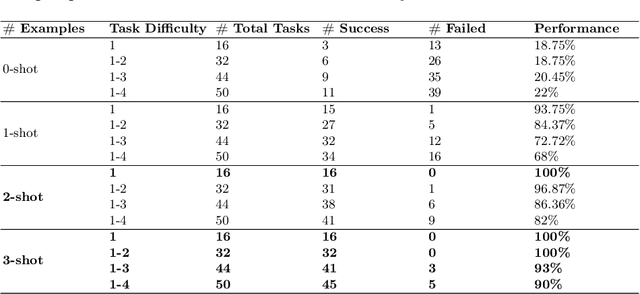

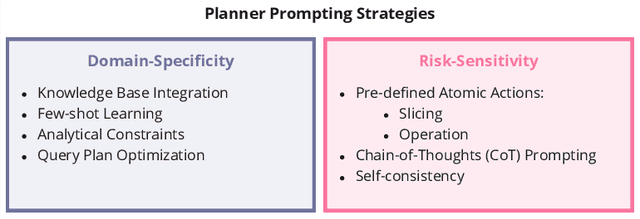
Abstract:Traditional methods for making software deployment decisions in the automotive industry typically rely on manual analysis of tabular software test data. These methods often lead to higher costs and delays in the software release cycle due to their labor-intensive nature. Large Language Models (LLMs) present a promising solution to these challenges. However, their application generally demands multiple rounds of human-driven prompt engineering, which limits their practical deployment, particularly for industrial end-users who need reliable and efficient results. In this paper, we propose GoNoGo, an LLM agent system designed to streamline automotive software deployment while meeting both functional requirements and practical industrial constraints. Unlike previous systems, GoNoGo is specifically tailored to address domain-specific and risk-sensitive systems. We evaluate GoNoGo's performance across different task difficulties using zero-shot and few-shot examples taken from industrial practice. Our results show that GoNoGo achieves a 100% success rate for tasks up to Level 2 difficulty with 3-shot examples, and maintains high performance even for more complex tasks. We find that GoNoGo effectively automates decision-making for simpler tasks, significantly reducing the need for manual intervention. In summary, GoNoGo represents an efficient and user-friendly LLM-based solution currently employed in our industrial partner's company to assist with software release decision-making, supporting more informed and timely decisions in the release process for risk-sensitive vehicle systems.
Towards Explainable Test Case Prioritisation with Learning-to-Rank Models
May 22, 2024Abstract:Test case prioritisation (TCP) is a critical task in regression testing to ensure quality as software evolves. Machine learning has become a common way to achieve it. In particular, learning-to-rank (LTR) algorithms provide an effective method of ordering and prioritising test cases. However, their use poses a challenge in terms of explainability, both globally at the model level and locally for particular results. Here, we present and discuss scenarios that require different explanations and how the particularities of TCP (multiple builds over time, test case and test suite variations, etc.) could influence them. We include a preliminary experiment to analyse the similarity of explanations, showing that they do not only vary depending on test case-specific predictions, but also on the relative ranks.
* 3rd International Workshop on Artificial Intelligence in Software Testing (AIST) - International Conference on Software Testing and Validation (ICST)
Domain Generalization through Meta-Learning: A Survey
Apr 03, 2024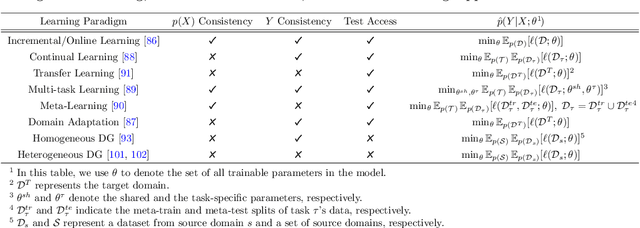

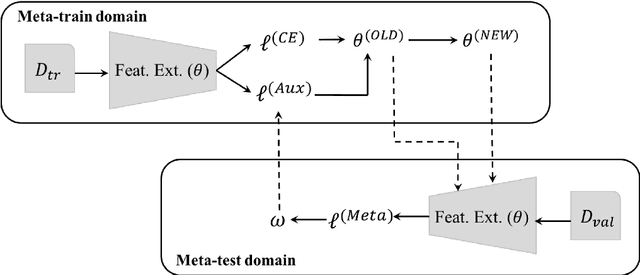
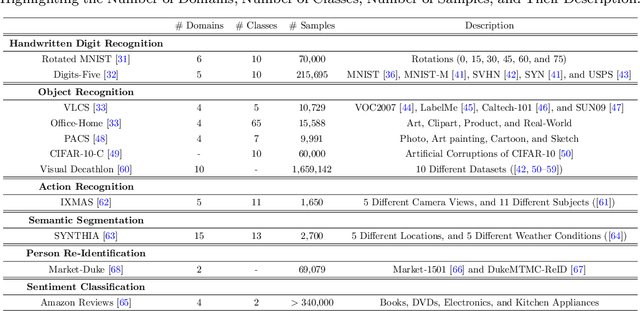
Abstract:Deep neural networks (DNNs) have revolutionized artificial intelligence but often lack performance when faced with out-of-distribution (OOD) data, a common scenario due to the inevitable domain shifts in real-world applications. This limitation stems from the common assumption that training and testing data share the same distribution-an assumption frequently violated in practice. Despite their effectiveness with large amounts of data and computational power, DNNs struggle with distributional shifts and limited labeled data, leading to overfitting and poor generalization across various tasks and domains. Meta-learning presents a promising approach by employing algorithms that acquire transferable knowledge across various tasks for fast adaptation, eliminating the need to learn each task from scratch. This survey paper delves into the realm of meta-learning with a focus on its contribution to domain generalization. We first clarify the concept of meta-learning for domain generalization and introduce a novel taxonomy based on the feature extraction strategy and the classifier learning methodology, offering a granular view of methodologies. Through an exhaustive review of existing methods and underlying theories, we map out the fundamentals of the field. Our survey provides practical insights and an informed discussion on promising research directions, paving the way for future innovation in meta-learning for domain generalization.
Autonomous Large Language Model Agents Enabling Intent-Driven Mobile GUI Testing
Nov 15, 2023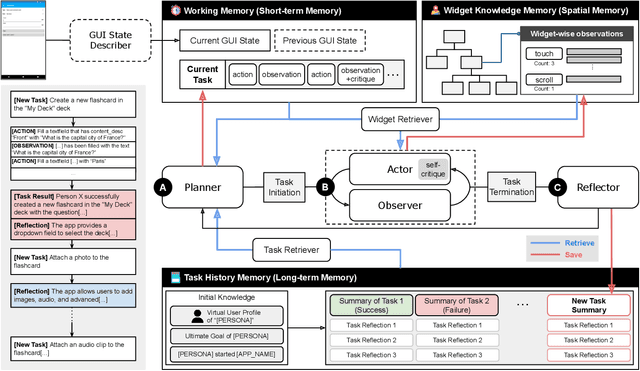



Abstract:GUI testing checks if a software system behaves as expected when users interact with its graphical interface, e.g., testing specific functionality or validating relevant use case scenarios. Currently, deciding what to test at this high level is a manual task since automated GUI testing tools target lower level adequacy metrics such as structural code coverage or activity coverage. We propose DroidAgent, an autonomous GUI testing agent for Android, for semantic, intent-driven automation of GUI testing. It is based on Large Language Models and support mechanisms such as long- and short-term memory. Given an Android app, DroidAgent sets relevant task goals and subsequently tries to achieve them by interacting with the app. Our empirical evaluation of DroidAgent using 15 apps from the Themis benchmark shows that it can set up and perform realistic tasks, with a higher level of autonomy. For example, when testing a messaging app, DroidAgent created a second account and added a first account as a friend, testing a realistic use case, without human intervention. On average, DroidAgent achieved 61% activity coverage, compared to 51% for current state-of-the-art GUI testing techniques. Further, manual analysis shows that 317 out of the 374 autonomously created tasks are realistic and relevant to app functionalities, and also that DroidAgent interacts deeply with the apps and covers more features.
Test2Vec: An Execution Trace Embedding for Test Case Prioritization
Jun 28, 2022
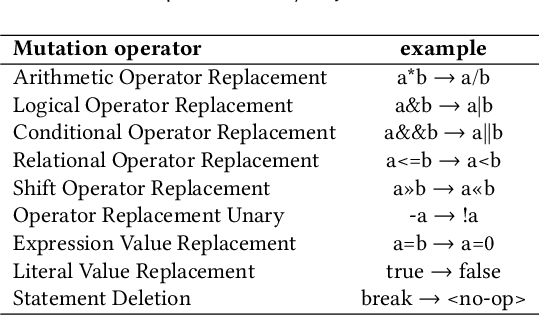


Abstract:Most automated software testing tasks can benefit from the abstract representation of test cases. Traditionally, this is done by encoding test cases based on their code coverage. Specification-level criteria can replace code coverage to better represent test cases' behavior, but they are often not cost-effective. In this paper, we hypothesize that execution traces of the test cases can be a good alternative to abstract their behavior for automated testing tasks. We propose a novel embedding approach, Test2Vec, that maps test execution traces to a latent space. We evaluate this representation in the test case prioritization (TP) task. Our default TP method is based on the similarity of the embedded vectors to historical failing test vectors. We also study an alternative based on the diversity of test vectors. Finally, we propose a method to decide which TP to choose, for a given test suite. The experiment is based on several real and seeded faults with over a million execution traces. Results show that our proposed TP improves best alternatives by 41.80% in terms of the median normalized rank of the first failing test case (FFR). It outperforms traditional code coverage-based approaches by 25.05% and 59.25% in terms of median APFD and median normalized FFR.
A Taxonomy of Information Attributes for Test Case Prioritisation: Applicability, Machine Learning
Jan 16, 2022



Abstract:Most software companies have extensive test suites and re-run parts of them continuously to ensure recent changes have no adverse effects. Since test suites are costly to execute, industry needs methods for test case prioritisation (TCP). Recently, TCP methods use machine learning (ML) to exploit the information known about the system under test (SUT) and its test cases. However, the value added by ML-based TCP methods should be critically assessed with respect to the cost of collecting the information. This paper analyses two decades of TCP research, and presents a taxonomy of 91 information attributes that have been used. The attributes are classified with respect to their information sources and the characteristics of their extraction process. Based on this taxonomy, TCP methods validated with industrial data and those applying ML are analysed in terms of information availability, attribute combination and definition of data features suitable for ML. Relying on a high number of information attributes, assuming easy access to SUT code and simplified testing environments are identified as factors that might hamper industrial applicability of ML-based TCP. The TePIA taxonomy provides a reference framework to unify terminology and evaluate alternatives considering the cost-benefit of the information attributes.
Automated Support for Unit Test Generation: A Tutorial Book Chapter
Oct 26, 2021



Abstract:Unit testing is a stage of testing where the smallest segment of code that can be tested in isolation from the rest of the system - often a class - is tested. Unit tests are typically written as executable code, often in a format provided by a unit testing framework such as pytest for Python. Creating unit tests is a time and effort-intensive process with many repetitive, manual elements. To illustrate how AI can support unit testing, this chapter introduces the concept of search-based unit test generation. This technique frames the selection of test input as an optimization problem - we seek a set of test cases that meet some measurable goal of a tester - and unleashes powerful metaheuristic search algorithms to identify the best possible test cases within a restricted timeframe. This chapter introduces two algorithms that can generate pytest-formatted unit tests, tuned towards coverage of source code statements. The chapter concludes by discussing more advanced concepts and gives pointers to further reading for how artificial intelligence can support developers and testers when unit testing software.
 Add to Chrome
Add to Chrome Add to Firefox
Add to Firefox Add to Edge
Add to Edge